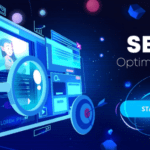Businesses are always seeking the best possible ways to adapt and innovate with the market.
One important aspect of this flexibility and accommodativeness is to make well-considered choices when hiring resources for the company. And when it comes to hiring for the company, there are two common types of hires:
- Long term hires
- Short term hires
Both types of hiring have their unique benefits and some drawbacks. Businesses must understand the difference between these two types of staffing firms: managing their workforce, optimizing resources, and achieving goals by keeping the fitting combination of short-term and long-term hiring leading to cost-effectiveness.
The Importance of Understanding Long-term vs Short-term Hires
With the rise of the labor market ( freelance work or short-term contracts, temporary employees) making the industry always evolving in this fast-paced and technologically empowered age, companies must be flexible and responsive to the shifting demands.
Both types of hiring perform different types of roles and purposes, hence requiring distinct approaches for the hiring processes and its management.
Understanding the value of both short- and long-term staffing is critical for personnel planning and management. When deciding on the best mix of both long- and short-term employees, businesses must examine their present and future needs, taking into account project schedules, talent requirements, financial limits, and strategic priorities. By recognizing the advantages and drawbacks of each, businesses can:
- Optimize their workforce for specific needs and projects
- Make informed decisions about talent acquisition and development
- Improve employee satisfaction and engagement
- Enhance overall business performance and adaptability
The Value of Long-Term Hires in Today’s Dynamic Job Market
Long-term hires are the employees who are hired with the purpose of retaining them for an extended time, typically from several years to even decades, offering them full-time employment with the integration of the company’s core team with the expectation that they will work in coordination with the other employees for achieving the future goals of the business and its progress. They are the valued employees of the company invested in the company’s success and growth.
In the ever-evolving and fast-paced job market. While landscape seems to support the short-term employees leading to rapid turnover, some significant advantages of the long-term workforce can not be neglected:
- Stability and Continuity: Permanent employees provide stability to the company by providing continuity to its operations which is crucial for keeping up with the momentum and productivity, particularly during uncertain times. It makes the company stronger by building more relations with the customers, stakeholders, and other partners.
- Loyalty and Commitment: Long-term employees tend to develop a strong sense of loyalty and commitment to the company, leading to increased job satisfaction and reduced turnover rates. This loyalty is a valuable asset, as it translates into increased productivity and a willingness to go the extra mile.
- Skill Development and Knowledge Retention: Employees who stay longer periods in the company gain more significant knowledge. They are experienced, have more insights into previous work and achievements, failures, and their reasons, and know the clients, industry trends, and internal procedures.
This knowledge helps them make the operations flow and productively, promoting innovations instead of just recreating them. It makes them valuable resources for organizations, helping them handle complex processes and customer dealings.
- Cost-effectiveness: While short-term staffing may seem to be cost-effective at first, they can pile up the costs of re-recruitment, training, and onboarding. Term employees having the industry expertise and proficiency results in higher innovation and better results, reducing the costs of training, and onboarding.
The Challenges of Long-Term Hires
Along with the numerous benefits long-term hires provide, they also hold certain drawbacks for small businesses. This includes:
- Hiring Costs: Recruiting and training long-term personnel frequently necessitates a large initial investment, including training and development fees. This investment can be too expensive for small businesses.
- Adaptability to Change: Long-term employees may struggle to adjust to rapid changes or adjustments in the company’s direction, which may result in opposition or trouble executing new projects. This opposition can be a significant barrier, as businesses must be agile and sensitive to changing market conditions.
- Stagnation Risk: Long-term employees who are not given opportunities for growth and development may become complacent or stagnant, potentially resulting in diminished innovation. It can be a major issue in today’s fast-paced age as companies need to be innovative, and adept with the time to lead the market and competition.
Long-term hiring is an invaluable resource for businesses seeking to develop a stable and loyal team. While they do bring certain challenges, the benefits far exceed the challenges. Understanding the pros and cons of long-term staffing allows businesses to make informed hiring decisions and build a team that is prepared to succeed in today’s always-changing employment market and lead it.
The Short-Term Hires: Flexibility and Expertise on Demand
Temporary staff encompasses a variety of temporary staffing options, including freelancers, contractors, temporary workers, and consultants. These personnel are hired for a set amount of time, usually ranging from a few weeks to several months or a year, to meet immediate demands such as project-based employment, seasonal demand, or filling a temporary gap.
With platforms like Toptal revolutionizing the hiring landscape, businesses seeking top talent for short-term engagements now have access to an unparalleled pool of professionals.
Temporary employees have numerous benefits to offer to the businesses, including:
- Flexibility and Agility: Short-term employees help businesses adjust or update their workforce from time to time according to market demands or project specifications. Hence, it helps businesses to adapt to the always-changing market trends with fewer expenditures like training and long-term commitments which they require with long-term staffing.
- Specialized Skills: These people with niche-specific skills, allow a business to instantly access these specified skills requirements and expertise for a short term without any requirements of extensive training or investments. It helps organizations to undertake complex projects by addressing the immediate needs helping it to grow rapidly.
- Adding new Perspectives: They have a diverse background which brings new and fresh ideas to the table adding new energy and creativity to the projects. They drive growth by providing alternative solutions and approaches related to any specific challenges an organization is going through, helping them to achieve the required result in less time and cost-effective ways.
- Less administrative burden: Onboarding short-term hires usually requires less paperwork, a simple onboarding process, and fewer regulatory obligations which allow the team to focus on the core business, lowering the administrative burden that organizations face managing long-term employees.
The Challenges of Short-Term Hires
While short-term staffing offers many benefits, it also presents some challenges, including:
- Lack of Commitment: Short-term staffing does not develop the same type of loyalty and devotion as long-term hires which can lead to high turnover rates. A high turnover rate means there would be disruption in the workflow leading to more cost for the new hiring process to fill the team gaps as short-term hires are more likely to leave the organization prematurely after getting more attractive offers or opportunities.
- Continuity Issues: Limited continuity is one of the drawbacks of short-term hiring, causing a break in communication, and knowledge sharing with other employees related to the projects after they leave. It may cause knowledge gas.
Inconsistency of the team as there would be a lack of motivation, making it difficult to keep up with the cohesiveness of the team dynamics over time.
- Impact on Company Culture: The continuous changes in the team to fill the gaps can lead to disruption in the company’s culture and its relationship with the employees, making them feel insecure or detached. The same goes with the short-term and new hires as they will struggle to settle in the new work environment aligning with their values in the limited time frame, which can lead to conflicts or misunderstandings affecting the collaboration and project outcomes.
- Expecting the quality of the product or services: There will always be gaps within the team after the short-term leaves, and the new hires will struggle with settling into the new place. This will affect the team’s performance as there will be differences in expectations and communication style. This variability in performance can affect the project outcomes, which may affect the reputation of the organization in the market.
Addressing these challenges requires a proactive approach, such as effective communication methods, management systems for performance tracking and strategic planning to limit risks and optimize the outcomes of short-term employees.
Companies also need to develop an effective hiring process to meet the business’s needs and expectations of long-term workers hired if they want them to stay loyal and drive success.
Choosing Between Long-Term and Short-Term Hires
When it comes to building a team, one of the most important steps is to choose whether a business should go for long-term hiring or short-term hiring. This will have a direct effect on the business’s success, performance, reputation, and culture.
There are a lot of factors that should be taken into consideration while making this decision. Some of them include project types, what skills and resources the business will be acquiring for continuous growth, what is the current state of the market, the budget of the business, and what’s its goals. Following are some considerations to help you make an informed decision about hiring a team for your business;
Nature of the Project or Role
Go to the core, what job description you want to fill, its scope, duration, and complexity. If it’s the core business functions and processes that require deep integration into the business culture and process, then long-term employees are your answer. And if you want some skills for project-based work, or it’s the demands of the customer or some sort of specialized task with timelines and clear deliverables, then you should go for short-term hires.
Organizational Goals
Align recruiting decisions with the organization’s strategic goals and priorities. Along with these factors, organizational culture and values also have a huge impact on whether the organization goes for long-term or short-term staffing.
Long-term employment is an ideal choice if you value stability, loyalty, and employee development. However, if you value flexibility, adaptability, and innovation, short-term hires may be the way to go.
Strategic Planning
Luigi Wewege, the President of Caye International Bank, said to “consider the long-term effects of hiring decisions on organizational structure, culture, and competencies while developing a workforce planning strategy. Balance short-term demands with long-term sustainability, succession planning, and talent development strategies to create a robust and adaptive workforce.”
Budget Considerations
Budget and financial considerations are really important parts of any hiring process. Consider budget limits and resource availability when deciding on the best hiring strategy. Long-term employment has a higher cost at starting which may include the training required and other job perks but it provides greater stability and ROI over time.
Short-term hiring can bring flexibility and cost savings, but they may require higher hourly or project-based fees and may also add up new budgeting for new hiring processes to fill the team gaps.
Market Dynamics
Consider the current employment market conditions, such as talent availability, competition, and industry trends. In a highly competitive market with skilled persons, short-term employment can be a more suitable option for fulfilling the immediate staffing requirements for a shorter duration. On the other hand, Long-term hiring is the best option if talent is limited and you want to secure top personnel for the long run.
Risk Assessments
Evaluate the risks and organizations’ risk tolerance and ability to stand against unwanted situations related to employment decisions. Long-term appointments need greater commitment and may pose risks including turnover, cultural misalignment, and scaling issues. Short-term hiring provides greater flexibility, but it may pose hazards to quality, continuity, and Regulatory obligations.
Future Growth
The company’s future growth and goals are one of critical factors that should be considered while you are hiring your team. Long-term staffing is about loyalty, building a stable team delivering quality outcomes helping in the company’s growth. Short-term staffing allows quick access to certain expertise for a project without any long-term commitments.
Ultimately, the decision to onboard the team should be made after a thorough evaluation of the business’s specific needs and circumstances, measuring the advantages and disadvantages of each method to optimize the employees’ effectiveness and achieve the strategic goals.
You can also go for the hybrid model that mixes the capabilities of long-term vs short-term hires to meet the changing company needs. By carefully evaluating these aspects, you can make an informed decision that is consistent with your business objectives and in-house positions for success within the organization.
Perfect Balance: Best Practices for Combining Long-Term and Short-Term Hires
One useful approach is to strike a balance between permanent positions and short-term staffing. Companies may build an ideal team by combining long-term employees’ stability and loyalty with the flexibility and skill of short-term hiring. Striking the ideal balance between long-term and short-term hires entails implementing best practices that capitalize on the strengths of both approaches while avoiding potential risks. Here are some strategies to consider:
Create a strategic hiring plan
To achieve this balance, businesses must first create a strategic hiring plan that is consistent with their business objectives and ambitions. This entails determining which areas require long-term and short-term employment, taking into account personnel availability, market dynamics, and budget limits. Companies that take a proactive and strategic approach to hiring can guarantee they have the right talent on board to drive success.
Continuous Learning and Development
Another important factor in balancing long-term and short-term hires is to encourage a culture of ongoing learning and development. This includes encouraging long-term employees to continue their training and upskilling, allowing short-term hires to gain new abilities, and fostering a culture of information sharing and collaboration optimizing the cross-functional synergy and learning opportunities.
Encourage regular communication, teamwork, and mentoring to allow for the exchange of ideas, insights, and best practices. Companies that invest in the growth and development of their talent can ensure that they have a workforce ready to face any challenge.
Communication Channels
Clear communication is also required when balancing long-term and short-term hires for seamless communication. It can be achieved by establishing clear roles, and duties meeting the expectations of all new hirings, and conveying the company’s goals, vision, and values regularly. Also, encourage an open feedback and performance review system to provide constructive criticism to help them grow professionally.
Establish performance indicators, milestones, and evaluation criteria to track progress and pinpoint growth opportunities. To achieve growth and future goals it is important to keep all the employees on the same page.
Provide Development and Growth Opportunities
Offer development and growth opportunities for both long-term and short-term staffing to improve their skills, capabilities, and career possibilities. This includes building relationships with top personnel and possible future hires, offering internships, mentorship programs, and training efforts, and providing a strong employer brand to attract top talent. Companies can ensure a consistent supply of skilled people by developing a talent pipeline.
Manage Expectations and Communication
Maintain open lines of communication with long-term and short-term hires during their career. To avoid misunderstandings and ensure accountability, clearly define roles, deadlines, and project schedules from the start.
By applying these best practices, the Company can effectively blend long-term and short-term hires. It will create a resilient, agile, and high-performing workforce matching the company’s changing demands with a culture that promotes cooperation and ongoing growth.
The Benefits of a Balanced Approach
A balanced hiring strategy offers numerous benefits, including:
Enhanced Talent Pipeline
Balancing long and short-term hires helps to build a strong talent pipeline. Long-term employees act as mentors and role models for new hires, supporting knowledge transfer and talent development within the firm.
Risk Mitigation
A diversified workforce makeup helps reduce the risks associated with relying on a single employment framework. Companies can better handle business disruptions and uncertainty by dispersing risk among various areas of employment.
Improved Employee Engagement
A balanced approach to recruiting promotes diversity and involvement within the company. Employees, both long and short-term, feel valued and empowered to contribute their talents and ideas, which boosts morale and job satisfaction.
Optimal resource utilization
Balancing both short- and long-term hires enables firms to maximize resource allocation. Long-term personnel forms a solid basis for core operations, whereas short-term hires can be carefully deployed to address special projects or transitory surges in demand.
Adaptation to Market Trends
In today’s fast-changing job market, a balanced strategy for hiring allows businesses to respond swiftly to new trends and technologies. Long-term hiring provides stability and continuity, whereas short-term hires add new skills and capabilities as needed.
A balanced hiring strategy provides firms with the best of both worlds: stability and flexibility, various skill sets, cost-effectiveness, scalability, talent development, risk mitigation, employee engagement, and responsiveness to market developments. Businesses that properly integrate long-term and short-term recruits into their workforce strategy can position themselves for long-term success in today’s dynamic business world.
Conclusion
No one size fits all the requirements of all the job roles and project demands in the competitive and fast-paced market.
Companies should seek to get the correct blend of long-term and short-term hires based on their specific needs, requirements, and goals, keeping in view the key considerations. This includes defining clear roles and expectations, tailoring recruitment strategies, implementing robust onboarding processes, encouraging collaboration and knowledge sharing, providing development and growth opportunities, managing expectations and communication, maintaining flexibility in staffing models, promoting diversity and inclusion, and continuously evaluating and refining workforce strategies.
To get it, the company needs to develop a strategic hiring process reacting to the changing market conditions, and promoting a growth-oriented culture.


